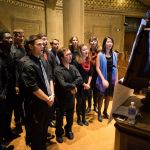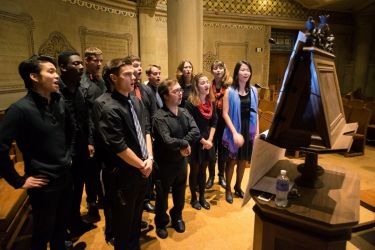For some people, the Middle Ages conjures up grotesque images of deadly plague and constant wars.
But for several Stanford scholars, this period, which lasted between roughly the 5th and 15th centuries, represents a vibrant time in humanity’s history that is still shrouded in mystery.
At Stanford, a group of humanities professors and their students have been analyzing ancient manuscripts, poring over old texts and examining resurfaced artifacts to better understand how current societies and cultures developed. They have also been making the Middle Ages come alive today by recreating medieval music and testing old food recipes.
In order to make this research possible, the Stanford Libraries’ staff has developed a growing trove of medieval artifacts and documents, many of which have also been digitized and are now available online to the public and other scholars around the world.



















